Polished concrete vs microcement: advantages of each coating
Actualmente hay mucha confusión, producto de la ignorancia, acerca del concreto pulido. De hecho, la mayoría de las personas lo asocian con el típico piso de estilo industrial y de fuerte tonalidad gris con efecto espejo que se usa en los interiores y exteriores de grandes áreas como oficinas, tiendas, fábricas, almacenes y estacionamientos. Incluso, aunque en muchísima menor medida, en algunas casas particulares.
However, most of the time what is assumed to be polished cement is actually microcement. The decorative coating that is currently trending in interior decoration and design, both in homes and in shops and premises. A coating that has also spread like wildfire on outdoor terraces, facades or swimming pools.
En este artículo encontrarás todo lo que tienes que saber y no sabías del concreto pulido: qué es, sus principales cualidades, los diferentes acabados que permite, el proceso de aplicación, el precio por metro cuadrado y, sobre todo, las principales diferencias con elmicrocementoo microcemento alisado.
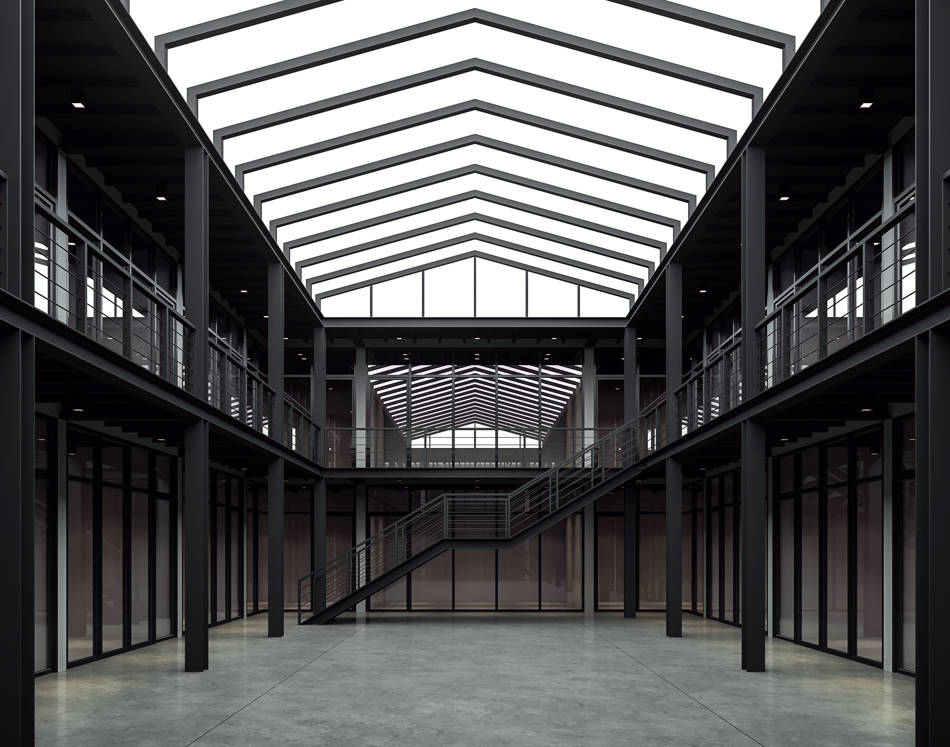
¿Qué es el concreto pulido?
El concreto pulido, también llamado cemento pulido, es en realidad un acabado decorativo, no un revestimiento como tal. Este producto se utiliza sobre todo en espacios exteriores de estacionamientos, centros comerciales o canchas deportivas y, en mucha menor medida, en alguna habitación interior.
Polished concrete is a finish resulting from sprinkling a cementitious mortar with aggregates and, then, polishing the floor to shine it with a rotary polisher. This technique of polishing the pavement is called troweling.
Ventajas del concreto pulido
El concreto pulido está diseñado para cubrir superficies donde lo más importante es la funcionalidad del pavimento más que la estética del mismo. ¿Por qué? Porque el concreto pulido se caracteriza por su gran durabilidad y resistencia, dos elementos que lo hacen ideal para revestir aquellas superficies industriales que están expuestas a un alto tráfico y peso. De hecho, son muy utilizados para áreas de carga y descarga, ya que el pavimento de concreto pulido no se quiebra.
Además los pavimentos de concreto pulido resisten muy bien a la rodadura de llantas. Es por ello que observamos este tipo de acabados con mucha frecuencia en estacionamientos y parkings.
Otra de las cualidades de los pisos de concreto pulido es que su superficie lisa y brillante evita la acumulación de polvo y suciedad. Un acabado que también favorece la sensación de amplitud.
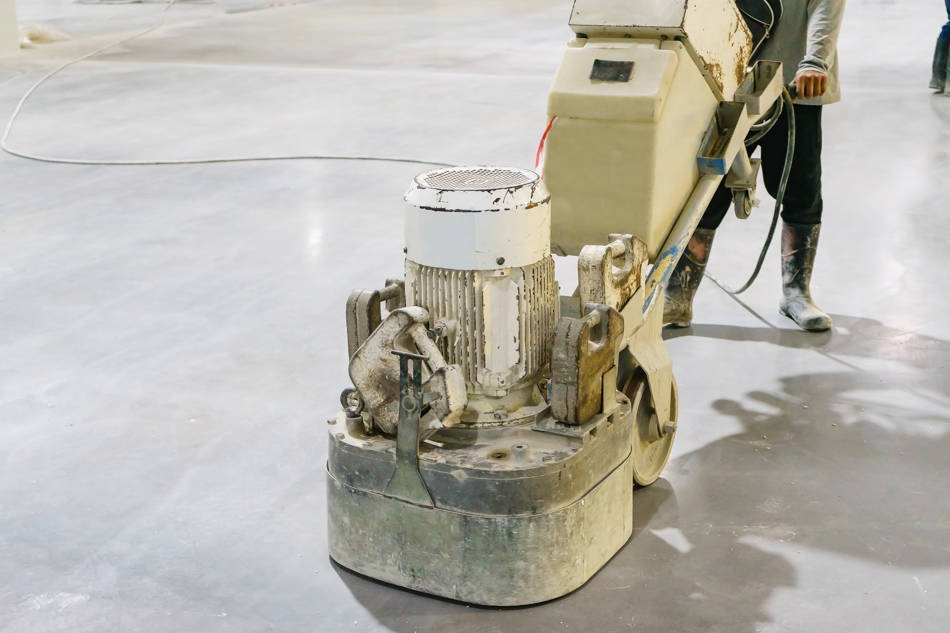
Desventajas del concreto pulido
Pero también hay que saber que el concreto pulido presenta una serie de inconvenientes y desventajas a tener en cuenta. A continuación señalamos las principales:
- The polished cement can lose shine over time due to very abrasive liquids such as industrial solvents. Therefore, it will have to be polished again.
- Puede terminar fisurándose y aparecer grietas si no se realizan de manera correcta las juntas de dilatación o se hace un mal uso del pavimento.
- Es necesario evitar aplicar este acabado en lugares con temperaturas frías o muy calientes, ya que el concreto pulido no es un buen aislante térmico.
- Only can be applied on horizontal surfaces.
- El proceso de aplicación requiere de tiempo, ya que exige realizar trabajos y utilizar maquinaria. A colación de esto, tiene juntas.
- Al igual que con la temperatura, el suelo de cemento pulido tiene poco aislamiento acústico.
- Es un material de baja porosidad y, además, necesita de malla para su estructura.
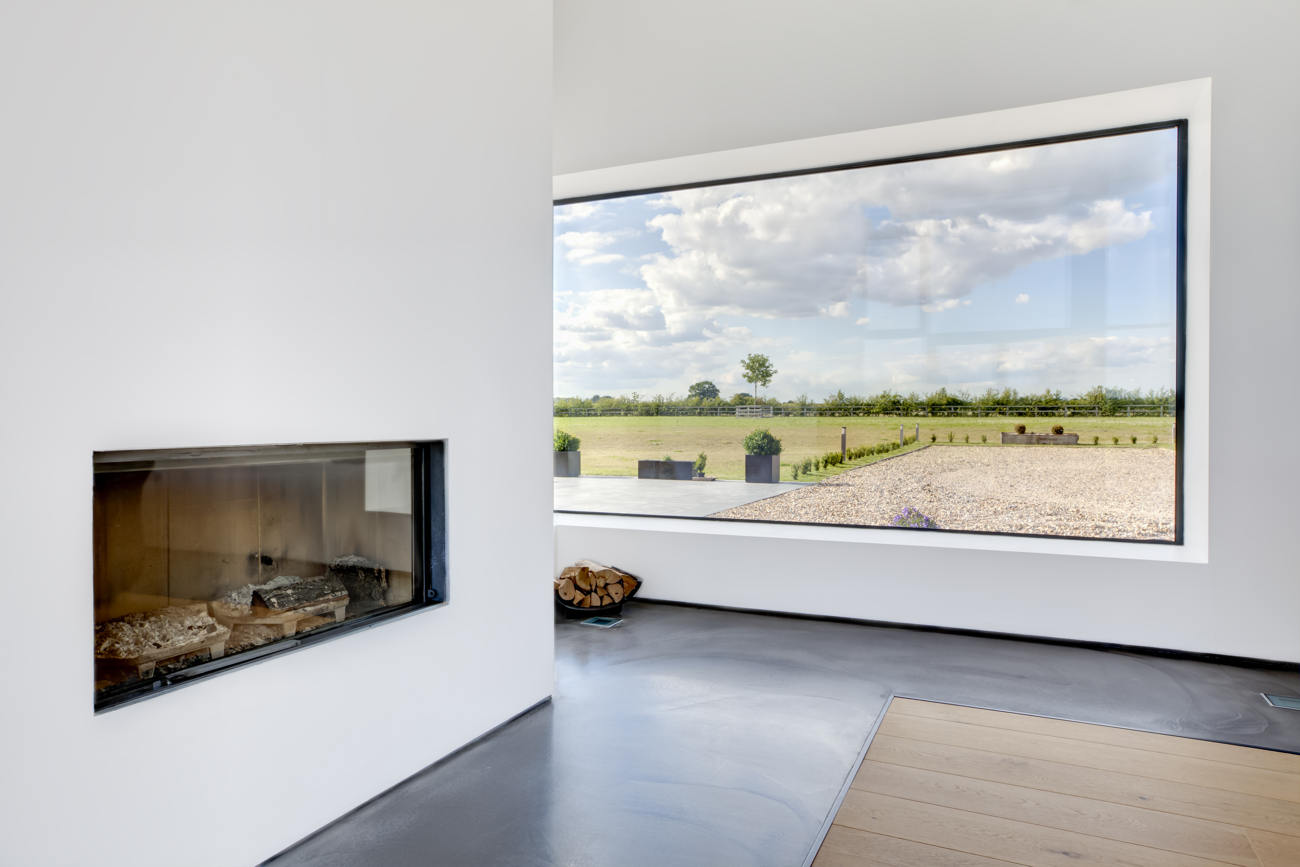
Acabados en concreto pulido
Although polished concrete is mainly associated with gray finishes due to the locations where it is usually applied, there is the possibility of choosing seemingly riskier colors such as black, red, green... Polished concrete is applied in airports, parking lots and garages, shopping centers and factories.
Baños de concreto pulido
Los baños y lavabos de concreto pulido no existen. Se confunde este tipo de acabado con el uso de otros revestimientos decorativos como puede ser el concreto bruñido o un lavabo de microcemento. De hecho, el microcemento es uno de los recubrimientos más empleados para renovar esta estancia por las grandes posibilidades de uso que ofrece.
The microcement in bathrooms is perfect for lining shower trays or bathtubs, thanks to the waterproof and non-slip capacity it can achieve thanks to the use of specific sealers. But also to create shelves, bathroom furniture, walls and floors.
Cómo hacer un piso de concreto pulido
The installation of a polished concrete floor is not much different from the application process of other types of concrete flooring. The components of sand, aggregates, cement, and water are indisputable.
As it is also the case that the concrete mix can be made both on-site and with specialized concrete mixers. This last alternative is the most recommended when it is necessary to cover large surfaces.
Next, we explain step by step how to make a polished cement floor correctly:
Paso 1: preparar el terreno
Clean up the terrain, making sure there are no debris or dirt. If there were, remove and clean. Then check the pavement levels, in case it is necessary to fill the surface.
Paso 2: encofrado
Formar el área que será pavimentada con cemento pulido. Un proceso cuya duración variará dependiendo de los metros cuadrados de superficie.
Paso 3: usar malla de alambre
El siguiente paso consiste en fortalecer la estructura del futuro suelo de concreto pulido. Para ello es necesario usar malla, lo que dotará al pavimento de mayores resistencias.
Paso 4: verter el concreto
Pour the concrete mix onto the pavement. It is very important in this step to smooth and level the surface, with the help of a ruler.
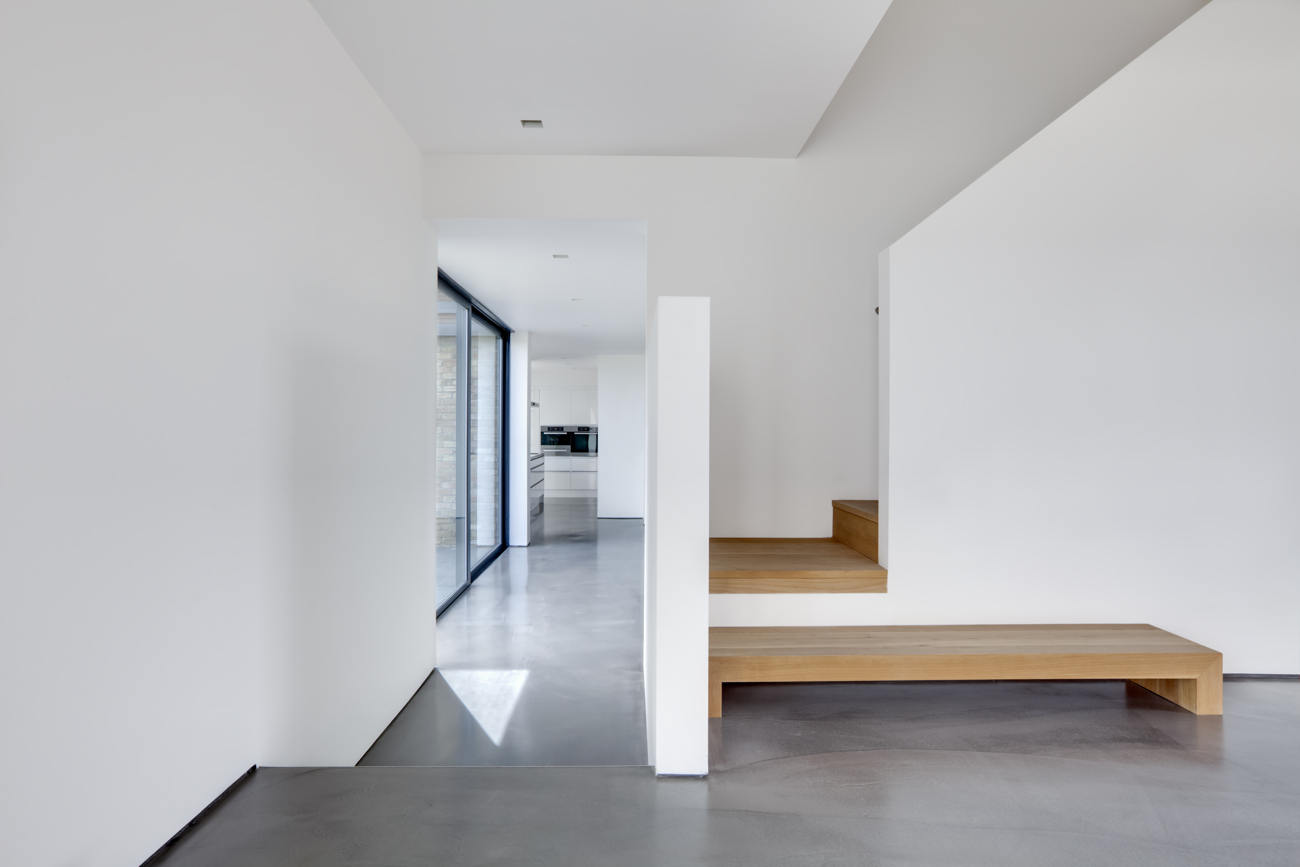
Paso 5: verificar el grosor de la losa
Es momento de verificar el grosor de la losa, en función del nivel que hayamos empleado como referencia en el paso del encofrado.
Paso 6: curado del concreto
Wait for the concrete to cure and dry properly. If necessary, use a float to smooth the pavement for a much smoother finish.
Paso 7: pulir el piso
Para terminar de hacer un piso de concreto pulido, hay que pulir la superficie para obtener ese brillo tan característico. Se puede hacer con un helicóptero o una pulidora.
¿Se puede aplicar concreto pulido en exterior?
Just because polished concrete is a decorative coating that predominates in interiors does not mean that its use is limited to these spaces. The resistance and durability of this material make it an equally valid alternative outdoors. An ambivalence that, despite the cons that this material presents compared for example with microcement, constitutes the reason for its popularity in recent years.
De esta manera, es una técnica decorativa que puede aplicarse en multitud de espacios exteriores tales como estacionamientos, centros comerciales, supermercados, naves industriales, etc.
Precio del concreto pulido por m2
El precio del concreto pulido por metro cuadrado depende de varios factores, entre ellos las dimensiones del suelo a revestir así como si se encuentra en interior o exterior. En este sentido, el costo final puede verse incrementado en algunas aplicaciones en exterior.
De la misma manera, las tarifas de cada profesional pueden provocar oscilaciones significativas en el precio de la misma manera que la época en la que se realice la obra. A grandes rasgos, el precio del cemento pulido por m2 oscila entre los 40 y 50 euros aproximadamente.
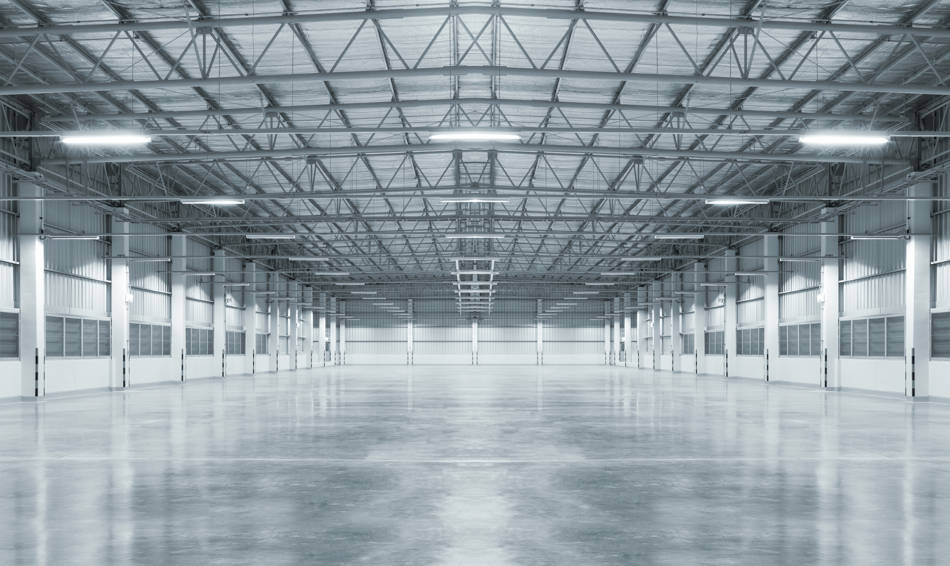
How to clean a polished concrete floor: expert tips
The rooms that contain polished concrete floors breathe modernity on all four sides. Especially the environments in which the popular industrial style has been sought to reproduce. Very practical and resistant floors that following a small cleaning protocol will look impeccable for a long time.
Take note of the best tips for cleaning a polished concrete floor. The experts speak!
1. Limpieza diaria del suelo de concreto pulido
Although this finish does not require a deep cleaning like other materials such as parquet or wood, which are much more delicate, it is highly recommended to clean the polished concrete floor every day. Even if it is in a superficial and quick way. How? With a cloth or mop to first remove the dust, and then scrub the surface with water and neutral soap.
2. Enjuagar con agua, siempre
To keep the polished concrete floor shiny, it is very important to rinse with water after using neutral soap. A tip that becomes even more relevant when the soap is replaced by cleaning products. In this case, if the pavement is not rinsed with water after use, the residues that could remain on the surface would gradually reduce its shine until it fades. It is forbidden to let the product dry before pouring water.
3. Mantén alejados los productos agresivos y con aceites
Never, under any circumstances, clean your polished concrete floor with aggressive products or those that include oil in their formulation. Keep ammonia, bleach, and solvent-based products at bay; the pavement will lose its shine. Do the same with oil-based products, because a kind of film will be created on the pavement that will promote the creation of dirt.
Mantenimiento del piso de concreto pulido: lo que debes hacer
That the resistances of a floor coated with polished cement are exceptional does not mean that it has to be kept in good condition so that it continues to be so for a long time. Something logical that happens with any material that decorates the pavement of the home, regardless of the space in which it is located.
In this sense, and just as it happens with cleaning and just explained, experts also agree on the steps to take to keep the polished concrete floor in optimal condition for a long time. This is what you need to know, and do.
Acierta con el barniz sellador
The varnish protects the polished concrete floor, gives it greater resistance and waterproof finishes. It is as important to make a perfect application of the material as to seal it properly. The varnish can be applied periodically, if desired, to strengthen the performance of the finish.
2. Renueva la capa protectora 1 vez al año
Once a year doesn't hurt. A popular saying that can be extrapolated to polished concrete. In floors that suffer a higher degree of traffic, it is highly advisable to renew the protective layer of the floor between 6 and 9 months approximately. Although it will ultimately depend on the use.
3. Protege el suelo de cemento pulido de manchas
Following the previous advice, when the layer that protects the polished cement floor deteriorates over time, it is completely exposed to many factors. Stains are one of them. To avoid unnecessary headaches, take note.
¿Se ha derramado algún líquido o sustancia sobre el piso? ¡Limpia lo más pronto posible! Usa papel absorbente para evitar que la suciedad penetre en el pavimento.
Luego, limpia el piso con el producto más adecuado para eso. Si la mancha es de aceite, por ejemplo, tendrás que usar un desengrasante. Consejo de experto: para verificar la compatibilidad antes de arrepentirte por una mala decisión, haz una pequeña prueba con el producto en un área que no sea muy visible. Siempre enjuaga con agua después.
Diferencias entre concreto pulido y microconcreto
If at this point you are considering using one of these two materials in your project, we provide you with useful information to help you in your choice after comparing the pros and cons of each. Next, we are going to address the main differences between polished cement and microcement.
1. El concreto pulido tiene mayor grosor que el microconcreto
The most noticeable difference between both finishes is their thickness. The microcement only has between 2 and 3 millimeters, which allows it to be applied both on horizontal surfaces (floors, stairs, ceilings...) and on vertical surfaces such as walls. It is a construction material so thin that it does not weigh it can be applied anywhere without fear that the structural load will be affected.
Something that does not happen with polished cement, whose thickness is between 5 and 10 cm and whose application is reserved only for floors and pavements.
2. El concreto pulido genera escombros, el microcemento no
Otra de las diferencias entre el microcemento y el concreto pulido se refiere a los escombros. El microcemento alisado se coloca sobre el material existente, ya sea piso o pared. Una excelente adherencia que evita las obras y los escombros que estas conllevan.
Caso totalmente opuesto al concreto pulido, un acabado que requiere obras para levantar por completo el suelo o pavimento existente y el empleo de maquinaria para ello.
3. La instalación del concreto pulido es mucho más larga
Este punto está estrechamente relacionado con el anterior. Como el microcemento no requiere de obras, el proceso de aplicación es muy rápido. Un procedimiento que en el caso del cemento pulido se extiende ostensiblemente.
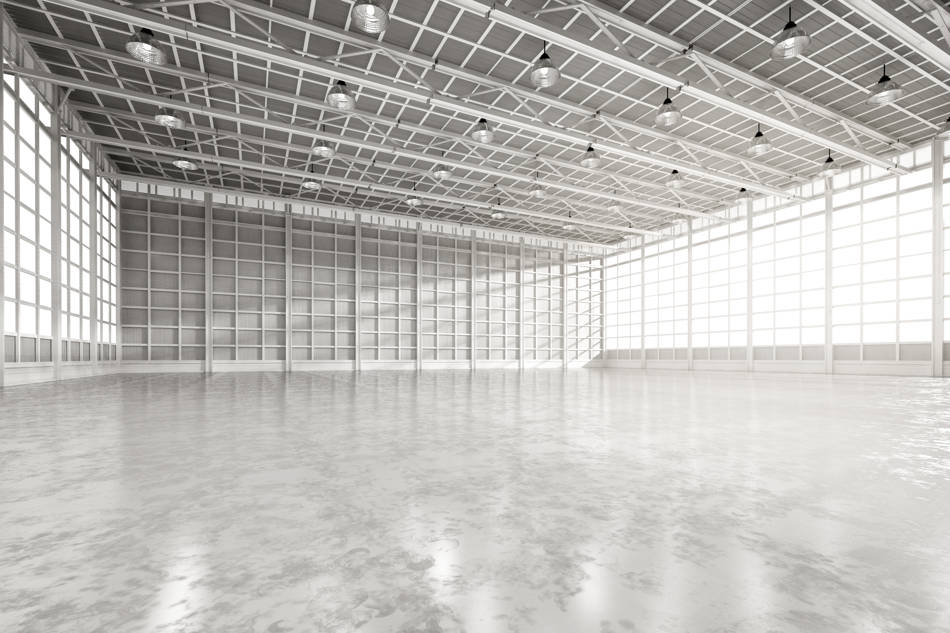
4. El concreto pulido es solo para pisos, el microconcreto también para paredes
While the versatility of microcement allows it to be used as a wall and floor coating, polished cement can only be applied to floors. A differentiation that, logically, has skyrocketed the popularity of the former at the expense of the latter.
5. Compatibilidad vs incompatibilidad con piso radiante
Heating by radiant floor is a great alternative to radiators and central heating for its benefits. However, this system is not compatible with any coating.
The microcement, which enjoys great thermal conductivity, is perfectly compatible with a radiant floor. In fact, it is one of the most recommended building materials.Aquíyou'll find everything you need to know. A quality that polished concrete cannot boast.
6. Solo el concreto pulido necesita juntas de dilatación
The polished cement requires the making of expansion joints, approximately every 4 or 5 meters apart. On the other hand, microcement is a continuous coating and, therefore, there is no need to make expansion joints. This is why the use of smoothed microcement has skyrocketed in interiors to the detriment of polished concrete.
7. El microconcreto es más versátil que el concreto pulido
El microconcreto no es solo un revestimiento continuo que no requiere de obras o juntas de dilatación, sino que además su aplicación es más rápida y sencilla.
But not only for that, but because the smoothed microcement also provides the security of being a coating of excellent durability and resistance not only to traffic like polished cement, but also to blows, to wear by abrasion, to chemicals or scratches, among others.
Y, por encima de todo, porque ofrece más soluciones decorativas ya que puede aplicarse sobre cualquier superficie (horizontal o vertical) y material (concreto, azulejos, baldosas, cerámica...). Un abanico más amplio que facilita que el microcemento se utilice en interiores y exteriores, tanto de viviendas particulares como de locales, negocios y demás empresas. En definitiva, por todo esto y más el microcemento es mucho más completo que el cemento pulido.
En definitiva, por todo esto y más, el microcemento es mucho más completo y versátil que el cemento pulido.
Suscríbete a nuestro boletín informativo
Receive in your email tips for the application and care of microcement, the latest trends and news from Topciment products.




